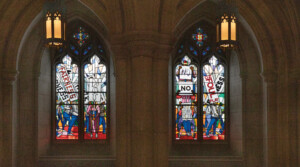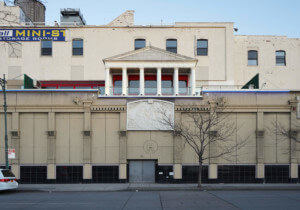Before writing on a soon-to-be-dedicated building in the historic Greenwood district of Tulsa, Oklahoma, you have to first tell the story of Greenwood.
One hundred years ago, one of the most horrific incidents of racial violence in United States history took place when a white mob, heavily armed by city officials, reduced the prosperous Black neighborhood into a 35-square-block expanse of smoldering rubble.
Carried out by land and by air over a span of 18 hours during Memorial Day weekend, the Tulsa Race Massacre of 1921 left hundreds injured, thousands displaced, and an unknown number of people dead (contemporary estimates place the figure at up to 300). All of this was in a close-knit community centered around Greenwood Avenue and its booming central business district, which was known during the early-20th century as America’s Black Wall Street. Despite losing thousands of homes along with schools, churches, and innumerable businesses to the ravages of arson, aerial bombing, and looting, some residents returned to Greenwood and rebuilt.
Decades later, the community was fractured again, first by progress in the form of the desegregation of Oklahoma’s deeply segregated second-largest city, and then by the true death nail: the urban renewal projects of the 1960s and ’70s in which swaths of North Tulsa were razed to make way for Interstate 244. Today, the interstate forms the northern boundary of what’s left of Greenwood, a compact historic district on the fringes of downtown Tulsa anchored by a cultural center, a reconciliation park, and the landmark Vernon AME Church.
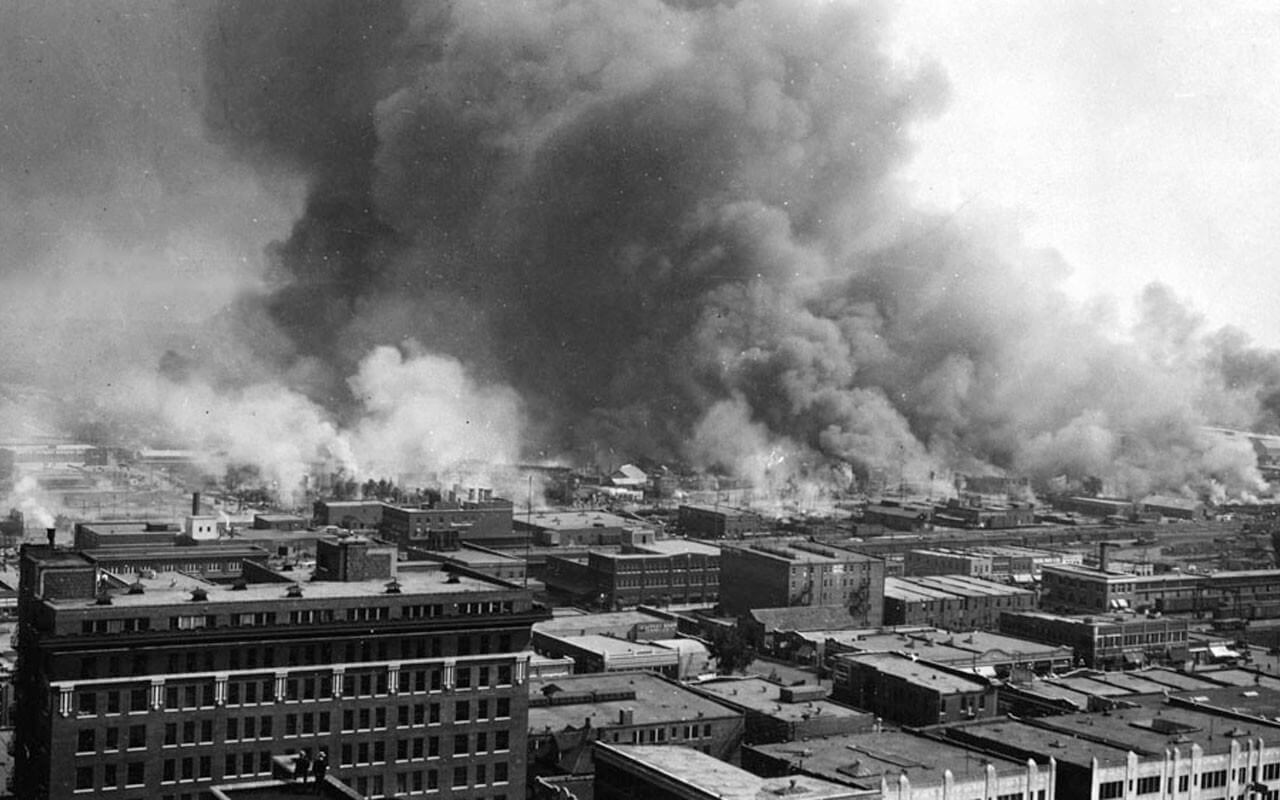
Up until fairly recently, very few Americans, Oklahomans included, were aware of what took place in Tulsa in 1921. Many still aren’t. The fiery decimation of a thriving Black neighborhood and the circumstances leading up to it were intentionally underreported at the time and subsequently omitted from history books on a local and national level, leading contemporary historians with the task of piecing together the events of May 30 and June 1. More recently, the Tulsa Race Massacre, a consequential historic event that remained frustratingly obscure for decades, has become an object of elevated national interest, especially as talk of reparations—not exactly a new topic in Tulsa—grows across the country. The burning of Greenwood has been harrowingly depicted in two recent HBO series, Watchmen and Lovecraft Country; meanwhile, outside of cable television, the ongoing social justice movement led by Black Lives Matter in the wake of the murder of George Floyd and other Black Americans has also forced the country to collectively confront its long and ugly relationship with racial violence. For many, this includes learning about Greenwood for the very first time.
Getting up to speed
With the centennial of the Tulsa Race Massacre fast approaching, Greenwood is bustling with activity as officials wrap up three major initiatives spearheaded by the 1921 Tulsa Race Massacre Centennial Commission: The Greenwood Art Project, a community-driven public art scheme; the Pathway of Hope, a pedestrian corridor that symbolically stitches-up the interstate-severed neighborhood and connects John Hope Franklyn Reconciliation Park with nearby landmarks, and Greenwood Rising, an 11,000-square-foot history center with a soaring roof overhang and dynamic paneled facade at the historic gateway to Black Wall Street. All three major projects are set to kick off or be dedicated later this month and in early June as part of a larger series of centennial happenings, culminating in the nationally televised Remember + Rise event on May 31.
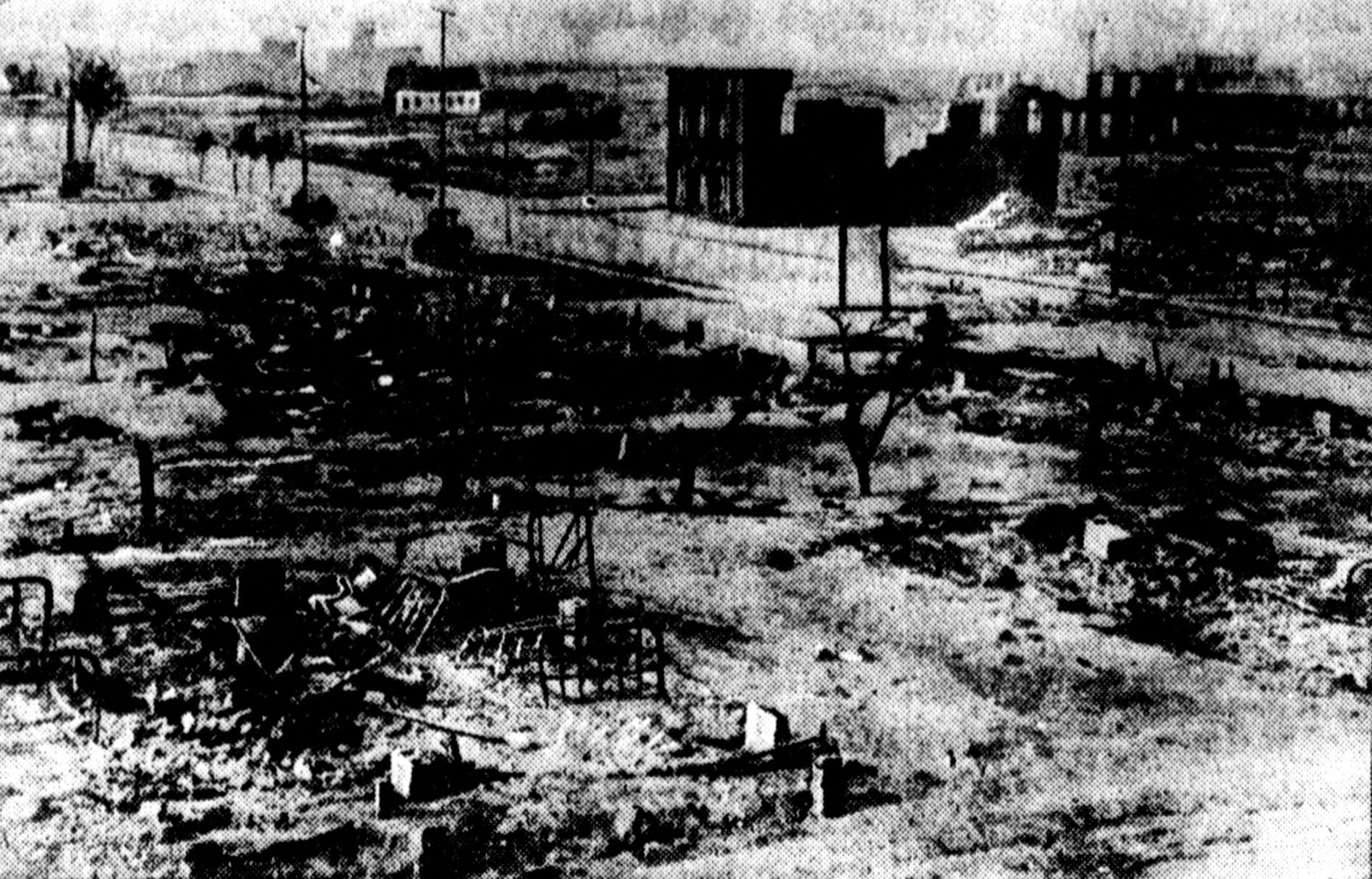
The Commission, which just this week came out strongly against an Oklahoma bill that restricts race education in schools, was formed in 2015 to “educate Oklahomans and Americans about the Race Massacre and its impact on the state and Nation; remember its victims and survivors; and create an environment conducive to fostering sustainable entrepreneurship and heritage tourism within the Greenwood District specifically, and North Tulsa generally.” If not vetoed by Governor Kevin Stitt, the legislation could potentially thwart the Commission’s ongoing education efforts.
Breaking ground in August of last year and set to be dedicated on June 2 before opening to the public later in the month, Greenwood Rising is, coincidentally, a vehicle for telling the story of Greenwood and the centerpiece project of the 1921 Tulsa Race Massacre Centennial Commission, with a $7.5 million price tag (not including the cost of exhibitions) to match. And to re-emphasize how relatively new the story of Greenwood is to many Americans, including Oklahomans, some employees of Tulsa-based Selser Schaefer Architects were not fully aware of what had unfolded in 1921 when the firm was first selected to design the project by the Commission in July 2019.
“Not everyone knew a whole lot about this,” explained Whitney Stauffer, a partner at Selser Schaefer Architects, to AN. “That’s part of the history—the fact that no one talked about it for a very long time. And so we had to get the whole team up to speed.” In familiarizing the project team with the historical significance of Greenwood, the firm brought in Hannibal Johnson, an author, historian, attorney, and authority on the Tulsa Race Massacre, to give the project team what Stauffer called a “raw and real account” so that they better understood the “magnitude of what we were embarking on.”
“Like any project, you listen to your client and you take all of that so that you can put it back into the project. This was that process and more,” added Stauffer.
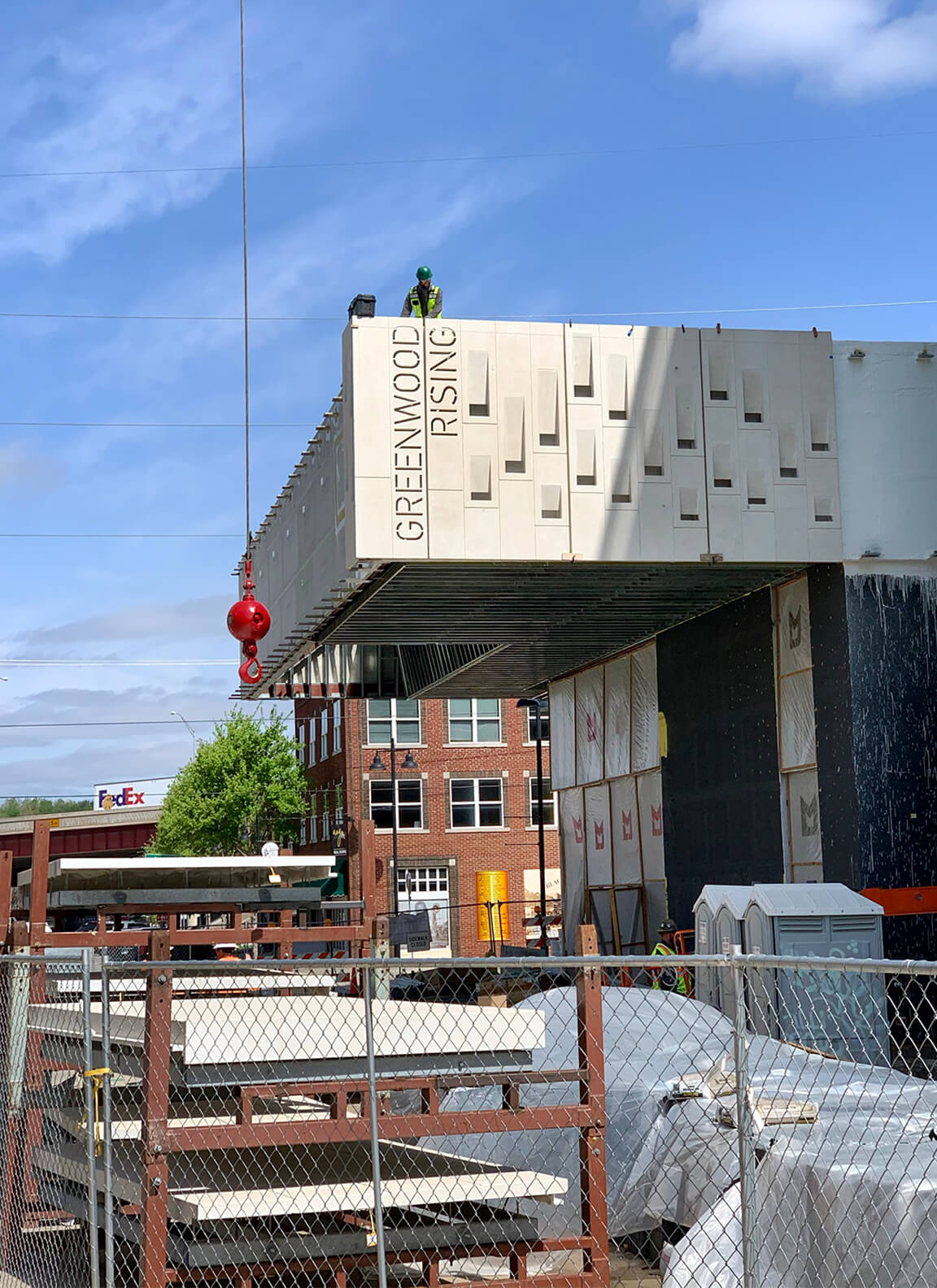
Checking all the boxes
Established in 1993, Selser Schaefer Architects has completed a markedly diverse number of projects in Tulsa and beyond with an emphasis on what it calls “people-first” design. Along with retail and hospitality commissions, cultural, educational, and wellness-focused projects, as well as adaptive reuse and historic preservation, play heavily into the firm’s portfolio. Completed and in-progress projects by the firm include a throwback-y Chick-fil-A concept restaurant, the first holistic defense office in the U.S. (established by Tulsa’s George Kaiser Family Foundation), and new offices for the Tulsa chapters of both Meals and Wheels and Habitat for Humanity. The firm is also overseeing a comprehensive master plan for Tulsa’s famed Philbrook Museum of Art.
Selser Schaefer was selected for Greenwood Rising via an RFP process initiated by the Commission not only because of the firm’s eclectic and largely community-focused portfolio of projects but because of its willingness to “get up to speed,” as Stauffer had put it.
“What impressed the Commission was the fact that out of the five firms that responded [to the RFP], Selser Schaefer were the only ones that said: ‘We want to learn the history, we want to come down to Greenwood, we want to tour the Greenwood Cultural Center, and we want to learn about this before we make a presentation for the building,’” recounted Phil Armstrong, project manager of the 1921 Tulsa Race Massacre Centennial Commission. “They were the only ones that did that. And that was quite impressive.”
Armstrong, who leads the Commission alongside its chair, Oklahoma state senator Kevin Matthews, also noted that the firm’s dedication to inclusion stood out during the selection process. “They were able to respond to our requests of letting us know how diverse their employee base was,” said Armstrong. “We knew that this wasn’t just something that they were taking on as a next gig, if you will, but that they truly embrace inclusivity and inclusion, even in their own day-to-day practices as a company. So not only have their expertise in building multimillion-dollar projects, but they really just checked all the boxes. And so they won the bid.”
[Editor’s note: AN readers have noted a marked dissonance between the diversity of Selser Schaefer Architects’ employee base, as mentioned by Armstrong, and the composition of the firm’s staff as evidenced on its website. While SSA does operate a Diversity, Equity, and Inclusion Scholarship Program, AN recognizes that the above quote from Armstrong does not appear to fully support the diversity of the firm as portrayed on its website.]
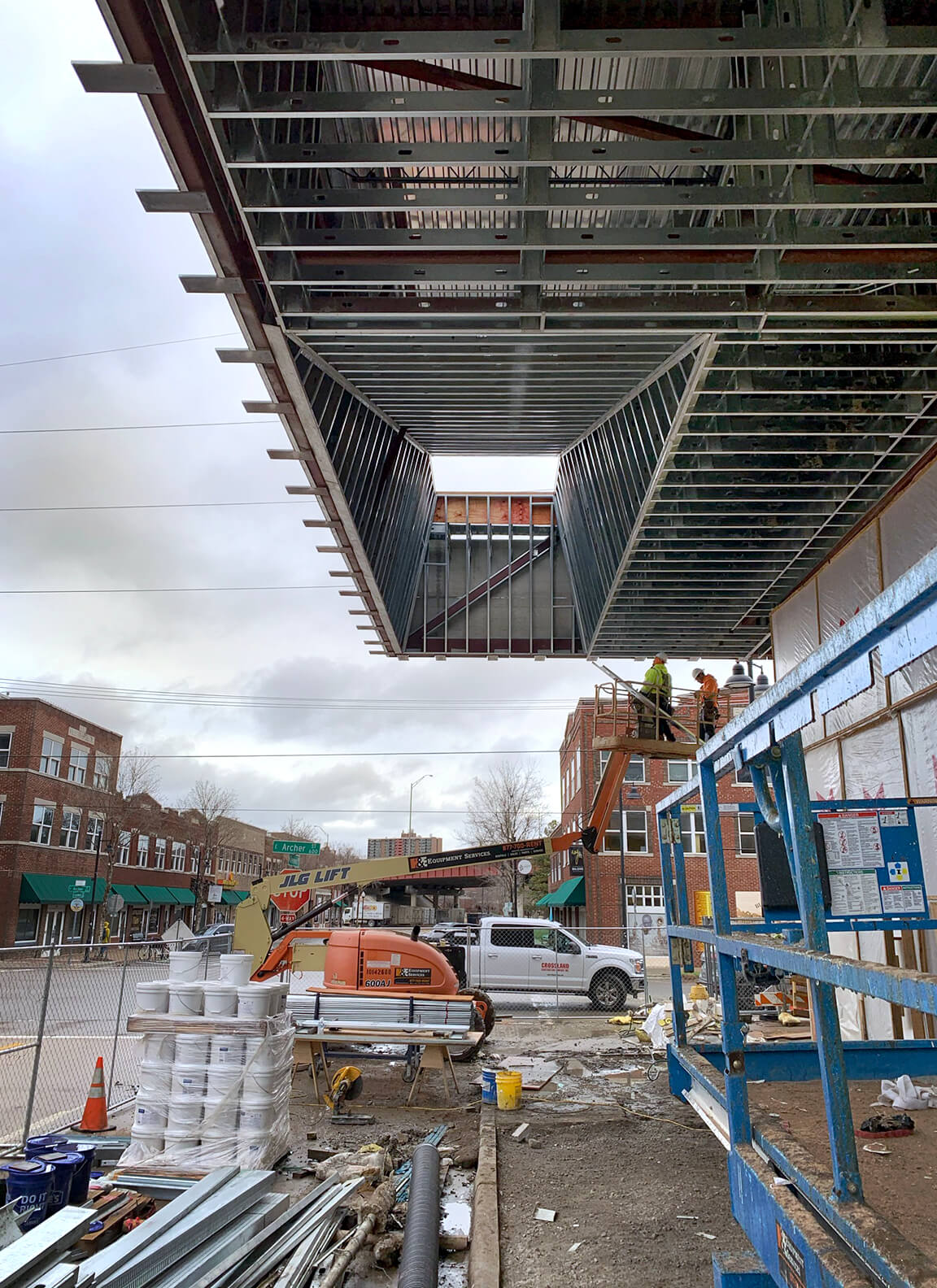
Next came community engagement meetings and the finalizing of the larger Greenwood Rising design and construction team, which includes, among others, New York-based exhibition designer Local Projects, landscape architect Howell & Vancuren (also the landscape architect of the Pathway of Hope), civil engineer Wallace Engineering, general contractor Crossland Construction, and HofferWaska Creative, which is overseeing environmental graphics design. Save for Local Projects, the core project team is wholly Tulsa-based.
Including the total costs of constructing Greenwood Rising, Armstrong estimates the multitude of projects unfolding across Greenwood, including a city-led $5.3 million renovation of the Greenwood Cultural Center by Moody Nolan, a $200,000 rehab of Vernon AME Church, initial operational funds for Greenwood Rising, and other related undertakings, to cost in the ballpark of $30 million. Also included in that sum is the Pathway to Hope, a public space project led by the Oklahoma Department of Transportation that Armstrong described as “highlighting what happens when you build a highway through the heart of a community.”
Because Greenwood Rising was carried out as a private development, Armstrong noted that an effort was made to include minority-owned firms—one being Oklahoma City-based steel fabrication company Weibee Steel—in the project even if their bids came in higher than competing, white-owned firms.
An architecture that soars
Situated at the intersection of Greenwood Avenue and Archer Street, the one-story Greenwood Rising building will serve, in the estimation of Armstrong, as an acclaimed new architectural landmark for Tulsa. The building is clad in glass-fiber-reinforced concrete panels that extend upward from a masonry plinth and, per Selser Schaefer Architects, “incorporate an ascending pattern of voids representative of a commitment to the sustained presence and revitalization of the historic district.” As noted by Stephen Dinnen, project architect and lead designer, the randomly arranged facade pattern is “symbolic of individuals within a larger knitted fabric of a community.”
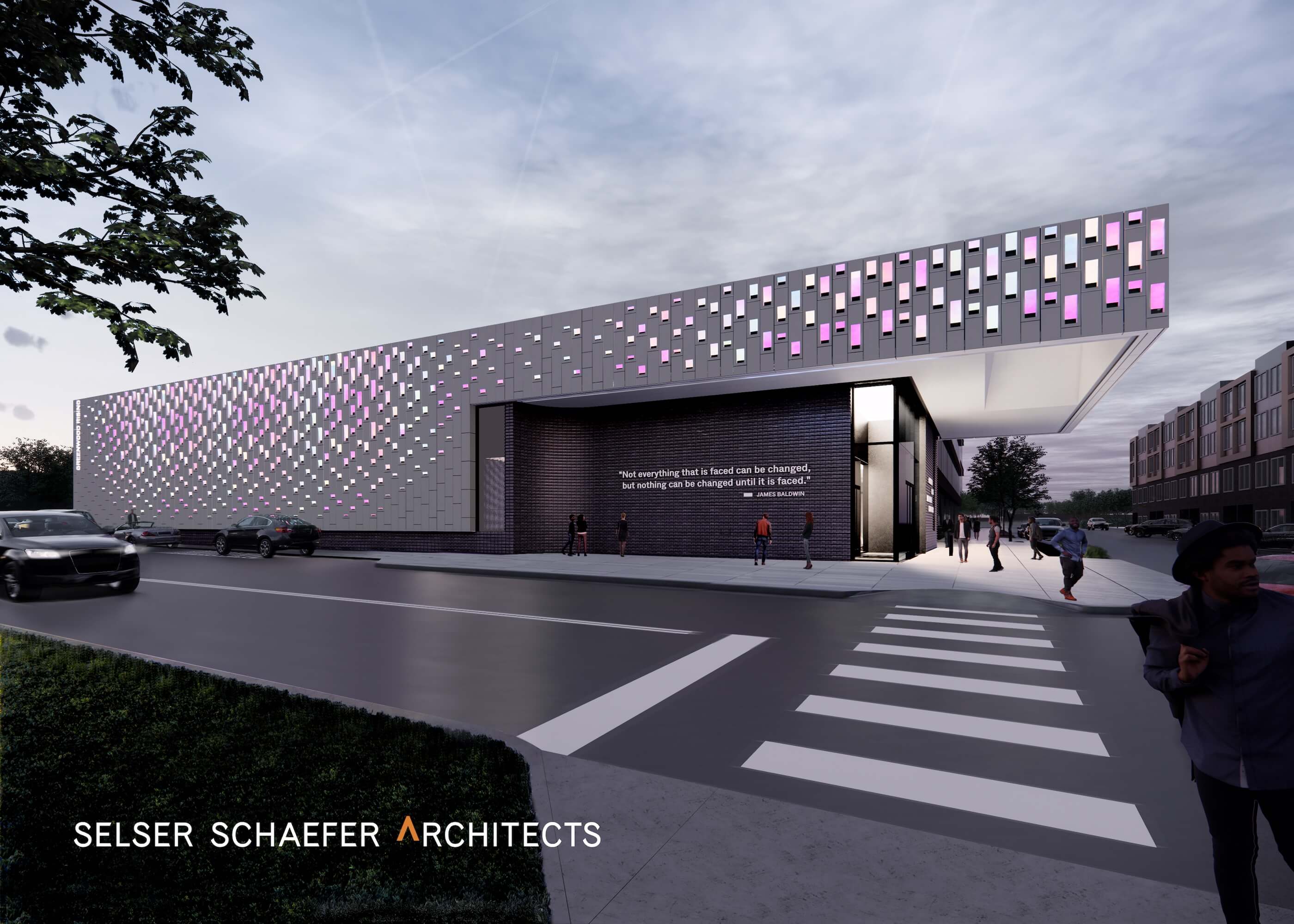
The facade is also light activated, with its voids “capturing daylight, creating a dynamic interplay of light and shadow,” according to the firm. At night, the building’s exterior comes alive as the facade emits different colored lights, evoking Black Wall Street’s nocturnal existence as a bustling entertainment district populated by bars, restaurants, and theaters.
The building’s pedestrian-level masonry pays homage to the intricate brickwork characteristic of the structures that lined Black Wall Street prior to its destruction.
“It’s an interesting contemporary nod that pulls out more of a three-dimensionality in the facade that existed previously throughout historic Greenwood,” explained Dinnen. “The brick is a building block prevalent throughout the history center. It was great to be able to use that and use it in a contemporary way. Because the project is really about looking forward.”
The north facade of Greenwood Rising also prominently features a quote from James Baldwin that “intentionally preempts a narrative for the exhibits inside,” noted Selser Schaefer in a project overview.

“It’s incredible how they [the architects] put in the detail of actually creating a building that looks like it’s rising,” said Armstrong. “It encapsulates the mindset of what we were trying to do inside the building […] they capture that visually on the exterior of the building.”
Roughly 10,000-square-feet of the building’s floor space is dedicated to exhibitions, which are interactive and multigenerational in nature and will include everything from holograms to large-scale installations. As visitors move through the exhibition hall, a “contextualized narrative” centered around the history of American race relations as told through the story of the Greenwood community will unfold. A key feature of the center is a concluding dialogue space dedicated to “decompressing” that includes tiered seating and tablets for visitors to write their thoughts on.
“You can be as introspective as you want to or you can reach out and begin to have conversations about what you just experienced and about what it’s going to take moving forward,” Dinnen said of the space, which can also be used for community events. “This is a space that transitions from the past to the future.”
Similarly, the spacious, bench-equipped outdoor area sheltered by a soaring overhang at the front of Greenwood Rising is meant to serve as an area for contemplation. “The whole project is about reflectance and remembrance, and healing, really,” said Dinnen.
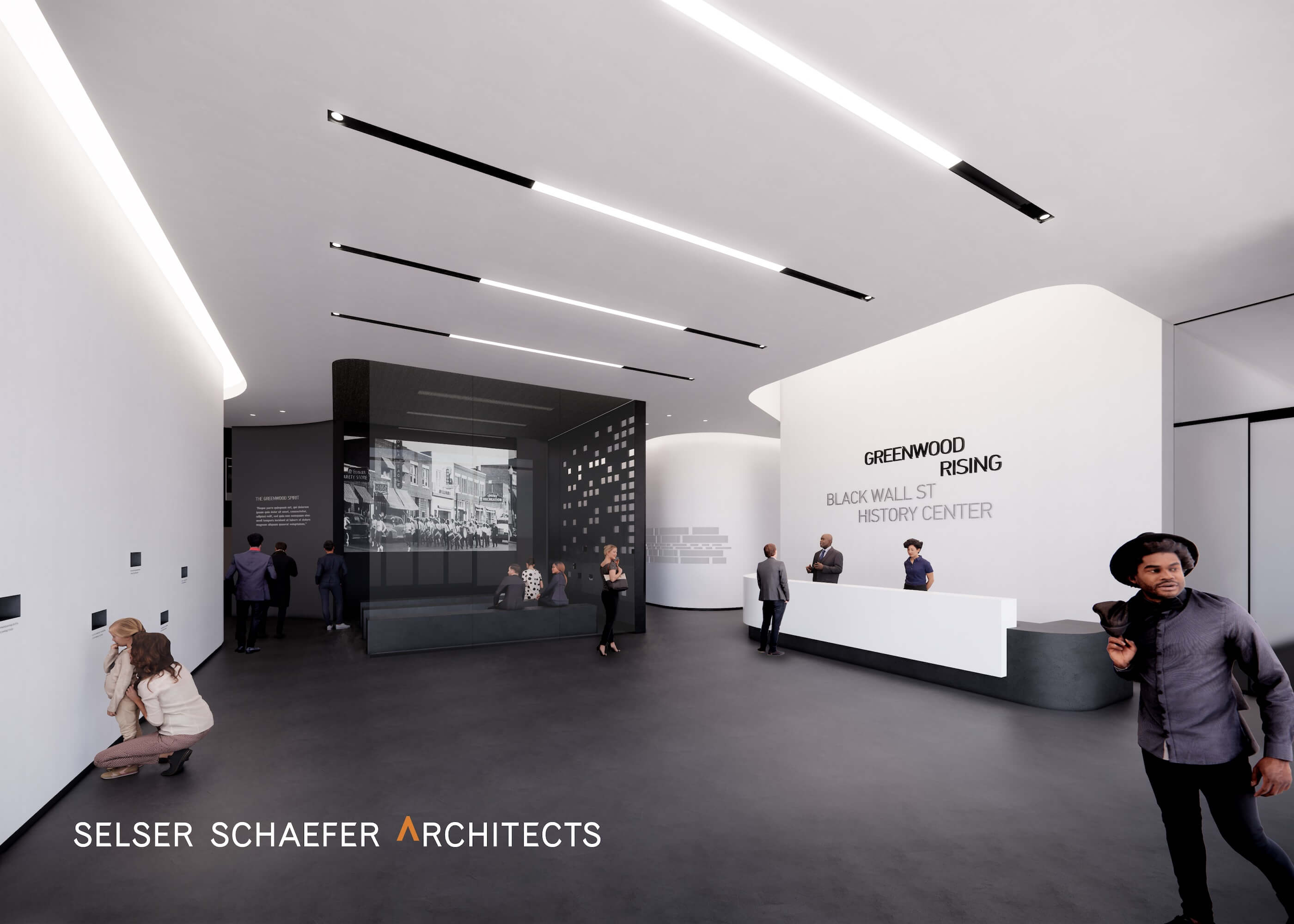
“A story of the history of a community”
As for the status of Greenwood Rising as a history center and not as a history museum, Armstrong explained that choice was intentional from the onset.
“We’re not primarily an artifacts collection,” Armstrong said, noting that although a few Greenwood artifacts will be on display, most that are “substantive in terms of collections” are housed at the National Museum of African American History and Culture in Washington, D.C.
“But we’re not focused on the maintenance, care, and securing of a collection of artifacts. We’re a narrative museum experience, and we’re telling a story of the history of a community.”
Outside of Greenwood Rising and other projects overseen by the 1921 Tulsa Race Massacre Centennial Commission, Greenwood is a community that’s fast-changing. Currently, the National Park Service is considering a nomination to inscribe Greenwood’s historic commercial buildings on the National Register of Historic Places, which complements an ongoing $10 million restoration campaign headed by the Historic Greenwood Chamber of Commerce. Meanwhile, the City of Tulsa and the Tulsa Authority for Economic Opportunity (TAEO) recently opened an RFQ from developers to design and construct a mixed-use development project for the Evans-Fintube site, an 11-acre city-owned property on the eastern edge of the neighborhood that includes the historic Oklahoma Ironworks building, a sprawling erstwhile industrial facility. The brownfield redevelopment site is also home to the future new corporate headquarters of BMX. But much of the high-profile revitalization in and around Greenwood, which also gained a minor league baseball park in 2015, hasn’t come without what longtime Black small business owners believe to be renewed threats of erasure.
As a 21st-century evolution of Greenwood picks up speed, a landmark new building prominently situated in the historic heart of the neighborhood stands to guarantee that the story of what happened in Tulsa 100 years ago will never be at threat of being lost again.







